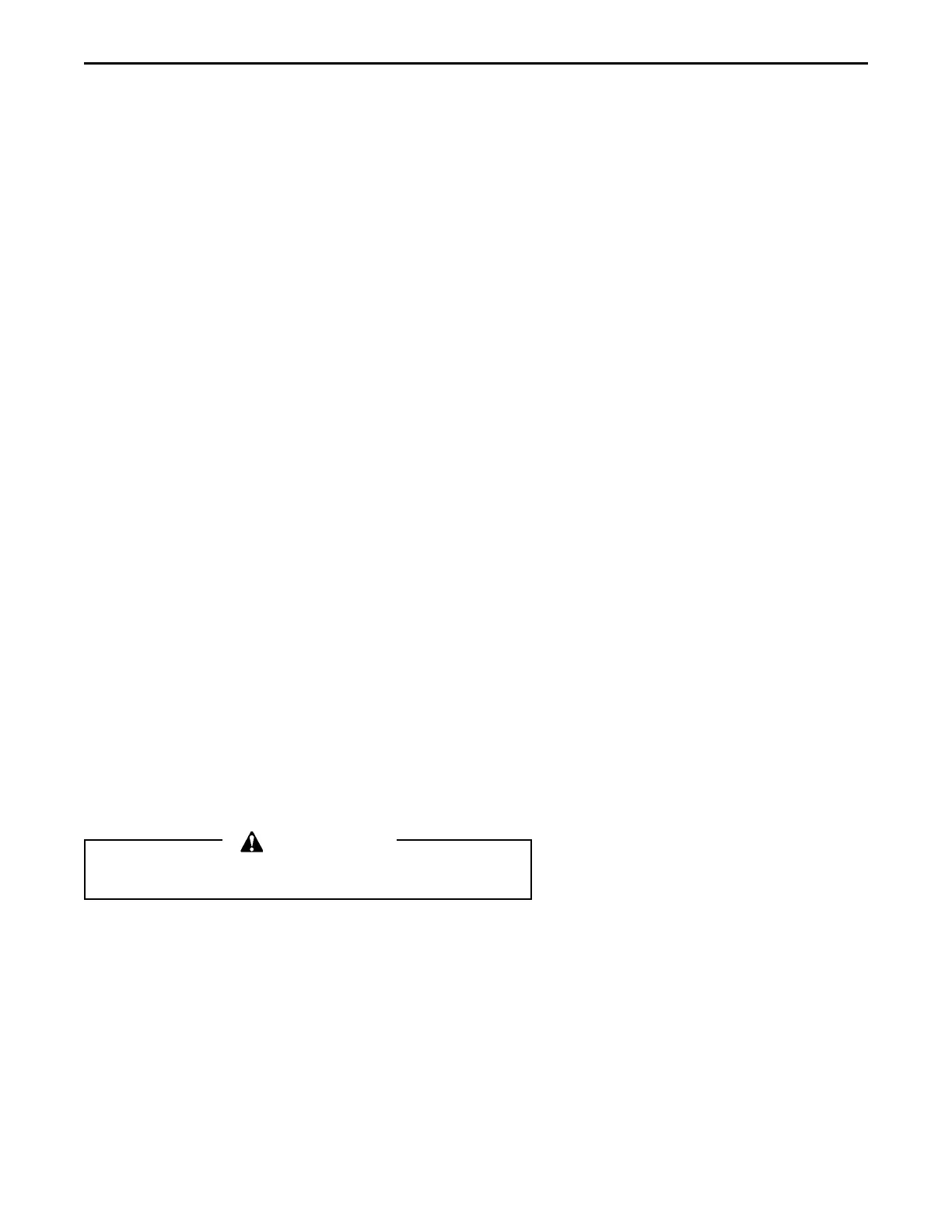GENERAL HYDRAULICS
10 - 7
Cylinder Time Cycle
Before performing the cylinder time cycle test, perform the CYLIN-
DER DRIFT TEST to insure that the control valve and the cylinders
are performing satisfactorily. If there is no excessive drift when the
blade lift control is in the hold position, but slow lift speed, slow
response or low power is present in the raise position, the problem
could be either the hydraulic pump or the main pressure relief valve.
Loss of flow can be caused by the main pressure relief valve not
sealing, allowing oil to flow into return to the reservoir passage. To
check the pump, the following time cycles should be observed when
raising the blade.
1. Position the machine so the blade will not touch the ground in its
fully lowered position.
2. Run the engine at full throttle.
3. Starting with the blade in its fully lowered position, put the
control lever in raise and record the time it takes to reach the
fully raised position. Repeat several times and then average the
readings.
The lift cycle should take 3 seconds. If the average cycle time is
more than 3 seconds, the pump should be inspected for replace-
ment or repair.
REMARK
This check should be made only when raising the blade.
Piston Packing Test
1. Position the machine so that the cylinder(s) to be tested can be
completely extended.
2. Start the engine, completely extend the cylinder(s) and place the
control lever in hold.
3. Stop the engine, block the rod and remove the hose.
WARNING
During next step, pressurized oil may be expelled from
cylinder.
4. Hydraulically extend the cylinder(s) again and check the rod end
port of the cylinder for oil flow. Flow should be minimal to none.
If oil flow is present, repair or replace the cylinder(s).

